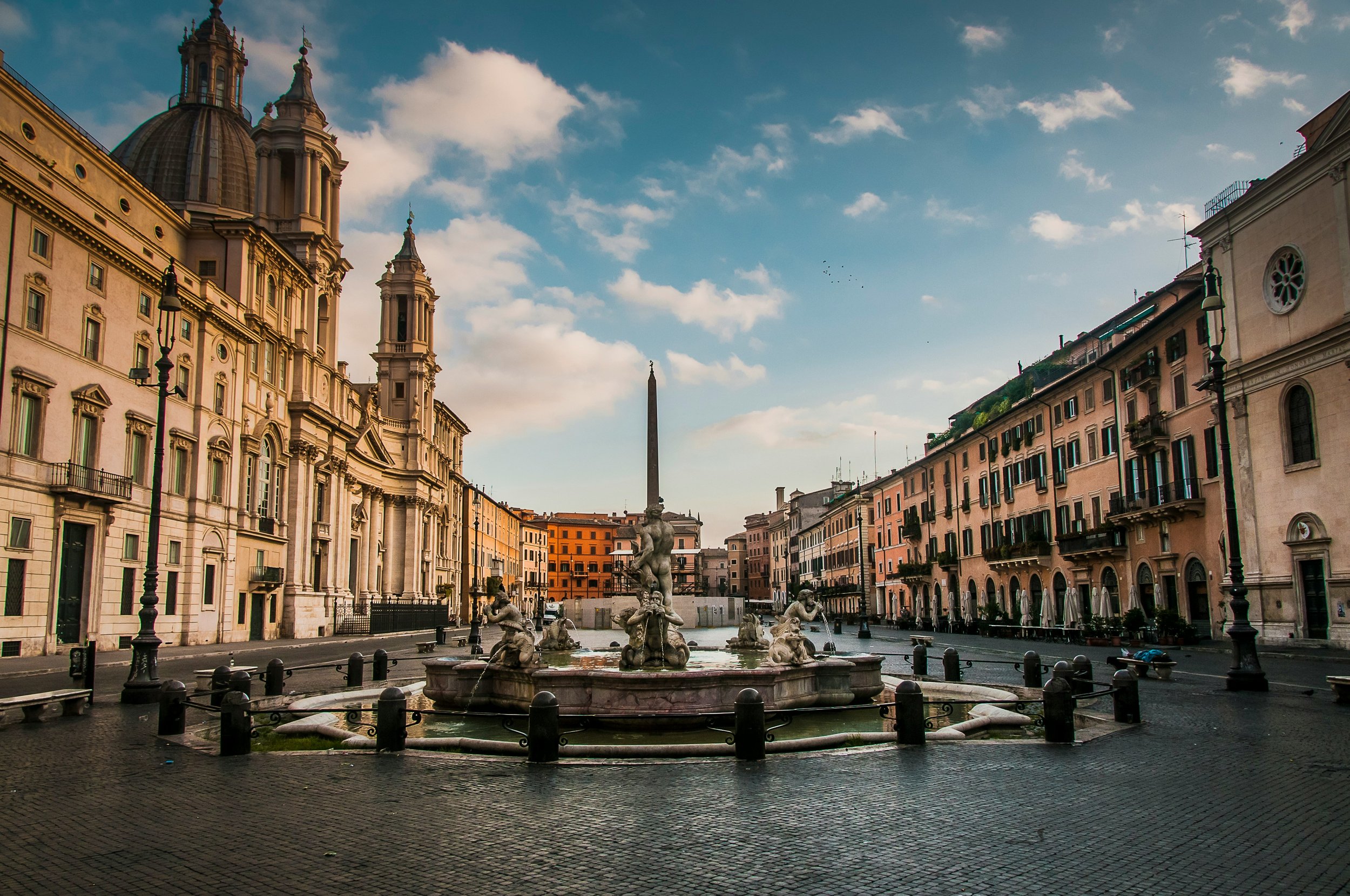Self-Guided Walking Tour
September 23, 2025
Tour Departure TIME: Open
Itinerary:
Starting Point: Hotel
1. Piazza Navona
Piazza Navona, built on the site of the ancient Stadium of Domitian, is one of Rome’s most famous squares and a prime example of Baroque urban design. Its oval shape preserves the outline of the Roman stadium, while masterpieces like Bernini’s Fountain of the Four Rivers and Borromini’s Church of Sant’Agnese in Agone showcase the rivalry and brilliance of 17th-century artists. On a self-guided visit, you can admire the three grand fountains, explore the church’s ornate interior, and enjoy the lively atmosphere filled with street performers, cafés, and art stalls. The piazza is especially beautiful in the evening, when it comes alive with lights and local life.
2. Campo de’Fiori
Campo de’ Fiori, once a medieval marketplace and execution site, has long been a vibrant center of Roman daily life. Its most famous monument is the statue of philosopher Giordano Bruno, who was burned at the stake here in 1600, symbolizing the clash between free thought and authority. On a self-guided visit, you can browse the lively morning market filled with fresh produce and spices, admire surrounding Renaissance palaces, and return in the evening when the square transforms into a hub of cafés and nightlife. It’s a place where history, commerce, and social life seamlessly blend.
3. Piazza Venezia
Piazza Venezia is one of Rome’s most important crossroads, historically serving as the center of political and social life in the city. Dominating the square is the massive Vittoriano, or Altare della Patria, built to honor King Victor Emmanuel II and Italian unification, which also houses the Tomb of the Unknown Soldier. On a self-guided visit, you can climb to the terraces for sweeping views of Rome, admire the blend of Renaissance and Fascist-era architecture, and explore nearby landmarks like Trajan’s Column and the entrance to the Roman Forum. The piazza is a powerful reminder of Italy’s layered history, from empire to modern nationhood.
4. Pantheon
The Pantheon, originally built in 27 BCE and rebuilt by Emperor Hadrian around 118 CE, is one of the best-preserved monuments of ancient Rome and a marvel of Roman engineering, particularly its massive unreinforced concrete dome. It has served continuously as a Christian church since the 7th century, housing the tombs of notable figures like Raphael and several Italian kings. On a self-guided visit, you can admire the coffered dome, the oculus that illuminates the interior, and the impressive marble floors and columns. Entry is now ticketed—visitors pay a small fee, typically around €5–€7, though children and residents may have free access, and it’s open daily with variable hours depending on religious services.
5. Trevi Fountain
The Trevi Fountain, completed in 1762 by architect Nicola Salvi, is one of Rome’s most iconic Baroque landmarks, symbolizing the power of water and the city’s engineering mastery of aqueducts. Its dramatic central figure of Oceanus, flanked by allegorical statues, makes it a masterpiece of sculpture and design. On a self-guided visit, you can admire the intricate carvings, toss a coin over your shoulder for good luck, and capture the fountain from various angles to appreciate its full scale. Visiting early in the morning or late at night offers a quieter experience, letting you soak in its grandeur without the crowds.
6. Spanish Steps
The Spanish Steps, completed in 1725, were designed to connect the Bourbon Spanish Embassy at Piazza di Spagna with the Trinità dei Monti church above, becoming a symbol of Rome’s elegance and social life. They have long served as a gathering place for locals, artists, and visitors, inspiring painters and writers over the centuries. On a self-guided visit, you can climb the 135 steps, enjoy views of the bustling piazza below, and visit nearby landmarks like the Barcaccia Fountain and luxury shopping streets. Springtime offers an especially picturesque scene when the steps are adorned with blooming flowers.


